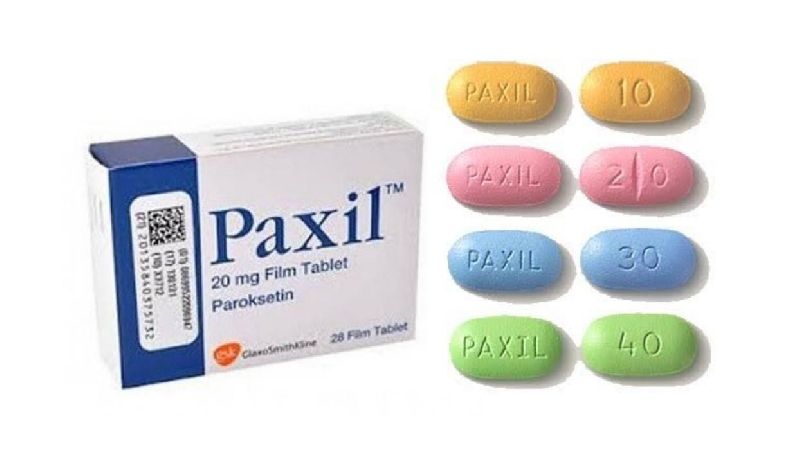Paxil, the brand name for paroxetine, is a prescription medication primarily used to treat various mental health conditions. As a selective serotonin reuptake inhibitor (SSRI), Paxil is effective in modulating serotonin levels in the brain, which can help alleviate symptoms of depression and anxiety. This article explores the uses, benefits, potential side effects, and important considerations for individuals prescribed Paxil.
Overview of Paxil
Paroxetine was approved by the U.S. Food and Drug Administration (FDA) in 1992. It is one of the first SSRIs introduced to the market and is known for its efficacy in treating several psychiatric disorders. Paxil is available in various forms, including immediate-release tablets, controlled-release tablets, and oral suspension.
Uses of Paxil
Paxil is indicated for the treatment of several mental health disorders, including:
1. Major Depressive Disorder (MDD)
Paxil is commonly prescribed for major depressive disorder, characterized by persistent feelings of sadness, hopelessness, and a lack of interest in daily activities. By increasing serotonin levels, Paxil can help improve mood and overall functioning.
2. Generalized Anxiety Disorder (GAD)
Paxil is effective in treating generalized anxiety disorder, where individuals experience excessive worry about various aspects of life. It helps reduce anxiety symptoms and improve daily functioning.
3. Social Anxiety Disorder (SAD)
Individuals with social anxiety disorder may experience intense fear and avoidance of social situations. Paxil paroxetine can help alleviate these symptoms, making it easier for individuals to engage in social interactions.
4. Obsessive-Compulsive Disorder (OCD)
Paxil is used to treat obsessive-compulsive disorder, where individuals experience recurrent, unwanted thoughts and compulsive behaviors. The medication can help reduce the frequency and intensity of these obsessions and compulsions.
5. Post-Traumatic Stress Disorder (PTSD)
Paxil is also indicated for the treatment of PTSD, a condition that can develop after experiencing or witnessing a traumatic event. It can help reduce symptoms such as flashbacks, nightmares, and severe anxiety.
6. Premenstrual Dysphoric Disorder (PMDD)
Paxil is sometimes prescribed for premenstrual dysphoric disorder, a severe form of premenstrual syndrome (PMS) that can cause significant emotional and physical symptoms.
Benefits of Paxil
Paxil offers several benefits, making it a preferred choice for many patients:
1. Efficacy in Multiple Conditions
Paxil’s versatility in treating various psychiatric disorders makes it a valuable option for individuals experiencing co-occurring conditions. Its effectiveness in managing both anxiety and depressive symptoms can improve overall mental health.
2. Rapid Onset of Action
While many antidepressants can take several weeks to show effects, some patients may notice improvements in symptoms within the first few weeks of treatment with Paxil. This quicker response can be particularly beneficial for individuals in acute distress.
3. Improvement in Quality of Life
By alleviating symptoms of anxiety and depression, Paxil can significantly enhance the quality of life for many individuals. Improved mood and reduced anxiety can lead to better relationships, work performance, and overall well-being.
4. Once-Daily Dosing
Paxil is typically taken once daily, which can improve adherence to treatment. The convenience of a single daily dose makes it easier for patients to incorporate into their routines.
5. Extended Formulations
Paxil is available in controlled-release formulations, allowing for a more stable blood level and potentially reducing the incidence of side effects.
Potential Side Effects
While Paxil can be highly effective, it is important to be aware of potential side effects, which can range from mild to severe. Patients should discuss these with their healthcare provider before starting treatment.
1. Common Side Effects
- Nausea: Many individuals report gastrointestinal disturbances, particularly nausea, during the initial weeks of treatment.
- Dry Mouth: A common side effect, which can be uncomfortable but usually resolves over time.
- Drowsiness or Fatigue: Some individuals may experience sedation or fatigue, especially when starting treatment.
2. Serious Side Effects
- Sexual Dysfunction: One of the more common serious side effects associated with SSRIs, including Paxil, is sexual dysfunction. This can include reduced libido, difficulty achieving orgasm, or erectile dysfunction.
- Withdrawal Symptoms: Discontinuing Paxil abruptly can lead to withdrawal symptoms, including dizziness, irritability, nausea, and flu-like symptoms. Gradual tapering is recommended when stopping the medication.
- Increased Suicidal Thoughts: As with other antidepressants, there is a risk of increased suicidal thoughts or behaviors in young adults and adolescents, particularly during the initial treatment period or when doses are changed. Close monitoring is essential.
3. Drug Interactions
Paxil can interact with various medications, including other antidepressants, blood thinners, and certain pain medications. A thorough review of all medications and supplements with a healthcare provider is essential to avoid harmful interactions.
Considerations and Precautions
Before starting Paxil, several important factors should be considered:
1. Medical History
Patients should inform their healthcare provider of any history of liver disease, bipolar disorder, or a history of substance abuse, as these conditions may affect the safety and efficacy of the medication.
2. Pregnancy and Breastfeeding
Paxil is classified as a pregnancy category D medication, indicating potential risks during pregnancy. It is generally not recommended unless the benefits outweigh the risks. Women who are pregnant or planning to become pregnant should discuss options with their healthcare provider.
3. Monitoring
Regular follow-ups with a healthcare provider are essential, especially during the initial treatment phase. Monitoring for side effects, mood changes, and medication efficacy can help ensure the best treatment outcomes.
Summary
Paxil (paroxetine) is a widely used medication that can effectively treat various mental health conditions, including depression, anxiety, and PTSD. Its dual action on serotonin levels makes it a valuable tool in managing both emotional and psychological symptoms. While it offers many benefits, potential side effects and risks must be carefully considered.
Patients prescribed Paxil should engage in open discussions with their healthcare providers about their medical history, any concerns regarding side effects, and the overall treatment plan. With the right management and support, Paxil can significantly improve the quality of life for individuals struggling with mental health disorders.
XMART INDIA Drawer Organizers for Underwear, Socks, Bras, Ties, Undergarments, and Scarves - Closet Storage Dividers for Household Use Wardrobe Storage Box Set of 4 (Multicolor)
₹289.00 (as of 21 October, 2024 18:23 GMT +05:30 - More infoProduct prices and availability are accurate as of the date/time indicated and are subject to change. Any price and availability information displayed on [relevant Amazon Site(s), as applicable] at the time of purchase will apply to the purchase of this product.)Rylan Electric Lighter for Candles Rechargeable Electric Gas Lighter Home Use Candle Lighter Plasma Flameless Windproof USB Lighter 360° Flexible Neck Arc Lighter (Multicolor)
₹280.00 (as of 21 October, 2024 18:23 GMT +05:30 - More infoProduct prices and availability are accurate as of the date/time indicated and are subject to change. Any price and availability information displayed on [relevant Amazon Site(s), as applicable] at the time of purchase will apply to the purchase of this product.)Desidiya 12 Glowing Starburst LED String Lights - 10ft USB Powered Warm White Fairy Lights for Diwali, Christmas, Weddings, Parties, Home, Patio & Garden Decor
₹399.00 (as of 21 October, 2024 18:23 GMT +05:30 - More infoProduct prices and availability are accurate as of the date/time indicated and are subject to change. Any price and availability information displayed on [relevant Amazon Site(s), as applicable] at the time of purchase will apply to the purchase of this product.)Desidiya® Bottle Lights with Cork - Mini Copper Wire Battery Operated String Decorative Fairy Lights with 20 LEDs (Warm White) - Pack of 1
₹28.00 (as of 21 October, 2024 18:22 GMT +05:30 - More infoProduct prices and availability are accurate as of the date/time indicated and are subject to change. Any price and availability information displayed on [relevant Amazon Site(s), as applicable] at the time of purchase will apply to the purchase of this product.)Go well Water Sensor Diya for Home Decoration - 12 Pcs Electric Flameless & Smokeless LED Diya Lights, Candle for Home Decor, Diwali Festivals Decoration,Christmas,New Year, Festive
₹395.00 (as of 21 October, 2024 18:23 GMT +05:30 - More infoProduct prices and availability are accurate as of the date/time indicated and are subject to change. Any price and availability information displayed on [relevant Amazon Site(s), as applicable] at the time of purchase will apply to the purchase of this product.)Discover more from The General Post
Subscribe to get the latest posts sent to your email.





